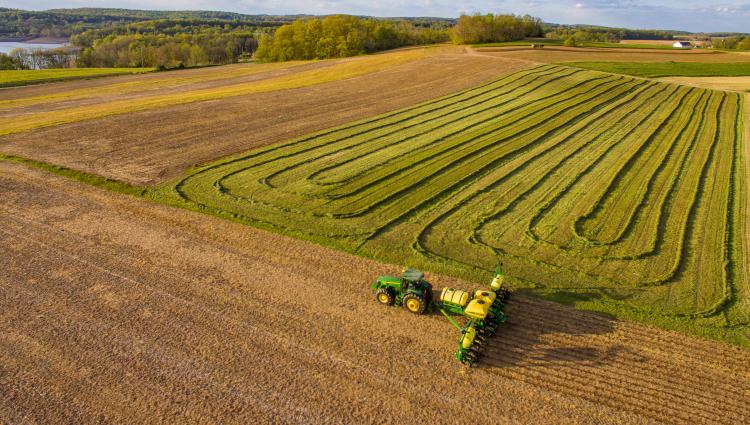'Tis the Season for Acreage Reporting

Ralph Stickman, Crop Insurance Agent
Spring crop acreage reporting time is upon us! If you haven’t already heard from your crop insurance agent or received a copy of your Map-Based Acreage Report (MBAR), don’t hesitate to reach out and request your copies. These maps are invaluable tools to have with you in the tractor to record your planted acres and planting dates as you finish fields.
While reporting, keep in mind it is crucial that your planted acres and planting dates are correct. Accurate planting dates ensure you have the proper coverage for the year, and precise acreage reporting allows us to provide a detailed report of your coverage based on the acres and dollar amount per acre. Incorrect acreage can affect your total financial coverage and impact your production average in future years.
For example, a field traditionally reported as 100 acres based on maps might plant to 92 acres due to obstacles and changes made over the years. We need to know the actual number of planted acres, not just the field or boundary acres. Insuring the entire amount leaves you paying a higher premium than you should, and at harvest time, it spreads your production across more acres, resulting in lower production averages.
5 Fast Facts About Spring Acreage Reporting in the United States:
(per USDA)
- Mandatory Reporting:
- The United States Department of Agriculture (USDA) requires all farmers who participate in federal crop insurance programs to report their planted acres annually. This reporting is crucial for determining the extent of coverage and ensuring that claims can be accurately processed.
- Deadlines Vary by State:
- Acreage reporting deadlines vary by state and crop, but they typically fall between late June and early July. Missing these deadlines can result in reduced coverage or ineligibility for certain programs.
- Technology Integration:
- Many farmers now use GPS and other precision agriculture technologies to map their fields and track planting dates. This data can be directly integrated into MBARs, making the reporting process more accurate and efficient.
- Financial Impact:
- Accurate acreage reporting directly impacts the financial protection farmers receive. Underreporting can lead to inadequate coverage, while overreporting can result in unnecessarily high premiums and lower production averages.
- Compliance and Verification:
- The USDA conducts regular audits and verifications to ensure the accuracy of reported acres. Discrepancies between reported and actual planted acres can lead to penalties or adjustments in coverage.
When it’s time to review and sign your MBARs for the year, carefully review each yield line to ensure that planted acres and planting dates are correct. Remember, accurate reporting is not just a regulatory requirement; it's a critical step in protecting your livelihood and ensuring the stability of your farming operations. Reach out to your crop insurance agent today to ensure you’re on track with your acreage reporting. As always, our team is here to assist you through every step.